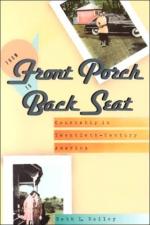
|
| Name: _________________________ | Period: ___________________ |
This quiz consists of 5 multiple choice and 5 short answer questions through Chapter 3, “The Worth of a Date”.
Multiple Choice Questions
1. By what year did the word “date” enter the vocabulary of the middle class, according to the author in Chapter 1, "Calling Cards and Money"?
(a) 1928.
(b) 1952.
(c) 1937.
(d) 1910.
2. Beth Bailey asserts that contemporary men are objectified as what in Chapter 3, "The Worth of a Date"?
(a) Repairmen.
(b) Human wallets.
(c) Work horses.
(d) Taxi drivers.
3. According to the author in Chapter 2, "The Economy of Dating,” after World War II, what became considered a rude behavior?
(a) Kissing in public.
(b) Asking for a second date.
(c) Driving too fast.
(d) Cutting in on the dance floor.
4. By 1959, nearly half of all women married before what age, according to the author in Chapter 2, "The Economy of Dating”?
(a) 27.
(b) 19.
(c) 30.
(d) 22.
5. According to the author in the Introduction, courtship includes many conditions, intentions, and _____________.
(a) Fate.
(b) Actions.
(c) Wishes.
(d) Luck.
Short Answer Questions
1. Ideals of beauty were often set by whom, according to the author in Chapter 3, "The Worth of a Date”?
2. The author states that by what decade did Americans begin to think dating was universal though it was only three decades old?
3. What constantly portrayed the other sex as commodities, according to the author in Chapter 3, "The Worth of a Date”?
4. What does “STD” stand for?
5. According to the author in Chapter 1, "Calling Cards and Money,” women who took the initiative in the dating system were thought to be what?
|
This section contains 252 words (approx. 1 page at 300 words per page) |

|




